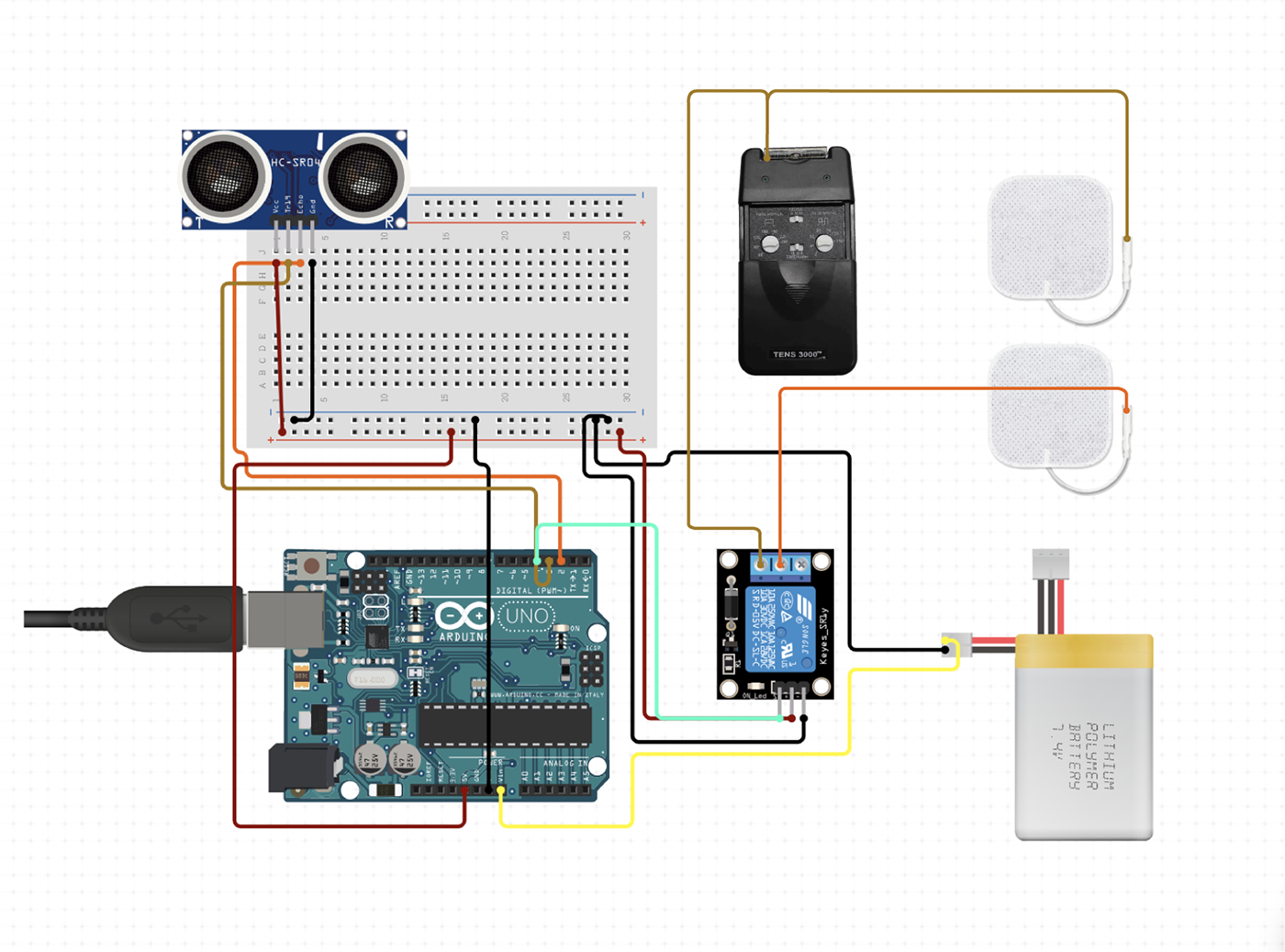
Project title: Wait!
Project Description:
This project targets on facilitating walking activity for users with vision impairment by incorporating TENS (transcutaneous electrical nerve stimulation) device as a form of haptics. People with blindsight—the ability to detect things in the environment without being aware of seeing them, are faced with the obstacles of perform daily activities without bumping into erect objects or surfaces. They need to use a stick to track obstacles or require guidance by another person when walking around buildings.
Wait! is a piece of wearable that addressed the demand of users with vision issues by providing audio and haptic feedback to alert users from being too close to impediments. It consisted of an ultrasonic sensor to detect real-time distance from the user to the object/surface in front of. When user has walked up too close towards the object/surface, the ultrasonic sensor will trigger the switch in the relay, generating the sound of a click and send low-voltage electrical pulses via TENS device to human body. Only when user stepped back, the electrical pulses will be put on halt. Henceforth, user are better supported and assisted in navigating indoor or outdoor spaces.
By incorporating an established TENS device, users are able to adjust the strength and frequency of pulse signals according to their own preference and level of comfortableness. The value could be set beforehand and saved for future uses with customization.

Project Context:
EMS(Electrical Muscle Stimulation) and TENS has been widely employed in the field of medicine. They can be considered as supplements to conventional muscle training, particularly for therapeutic treatment and physical rehabilitation. TENS is more specifically used in pain treatment that it stimulates the nerves exclusively by delivering electrical signals that do not trigger muscle movement. Applying TENS signals to painful spots at the body can reduce discomfort and relieve pain (Gibson et al., 2019).
Despite an emphasis on the field of medicine, there are emerging studies of using EMS as a form of haptics in the creative industry. Studies have been conducted around the cross-section of wearable devices, mixed reality, human-computer interaction and experience design. EMS has been used as a haptic input and output technology in wearable and textile-based computing through crafting comfortable textile electrodes (Pfeiffer & Rohs, 2017). EMS has also been incorporated into haptic interfaces to simulate the force feedback effect caused by a collision, in generating a mixed reality tennis game (Farbiz et al., 2007). With all the applications of EMS in non-traditional settings, TENS however, is yet to discovered and applied in other disciplines from an innovative perspective.

Parts List:
1 Arduino UNO
1 TENS unit (TENS 3000)
1 Ultrasonic Sensor HC-SR04
1 relay unit
1 Felt hat
Breakout cables
3 Male-to-Male jumper cables
2 Male headers
Wire cutters/strippers
Sewing kit
Small slotted screwdriver


